Prambanan, 17 kms to the east has both Buddhist and Hindu temples, the Buddhist temple from about 790 CE and the Hindu (signalling a religious conversion of the king) from abut 1000 CE.
We visited Prambanan first, using public transport. There is a Trans Jogia BRT stop 5 minutes from our hotel and bus 1A goes all the way to Prambanan for 4000 rupiah, about 35 cents. The site is easy to explore (it's flat with English signage) and well cared for. Foreigners pay a 10x premium to enter; however, the staff is friendly, there is complimentary coffee and water refills, and we bought the discounted combo ticket to visit both Prambanan ad Borobudur on the same or consecutive days. And we were lucky to have great weather; cloudy with temps in the low 80's.
Borobudur, about 40 kms to the northeast, is a Buddhist site dating from the 9th century CE and can be reached by pubic transport but we paid 70,000 rupiah each (about 5 USD) to be shuttled from hotel to site to hotel; leaving at 5AM and returning and 10AM.
We thought both sites well worth a visit. It is interesting to see the similarities and differences in architecture, art, and design, of the Hindu and Buddhist temples. The main temple at each site has beautiful storytelling bas-reliefs. And not to mention bumping into friendly local tourists.
More below in the captions. And all the photos on flickr here.
Waiting for Trans Jogia 1A.
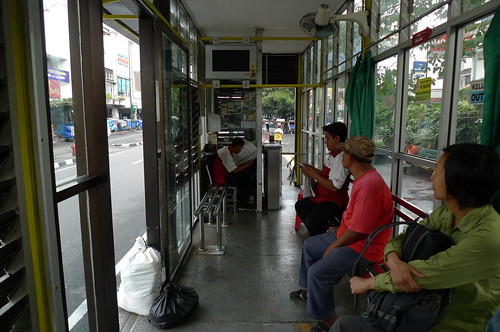
On the route.
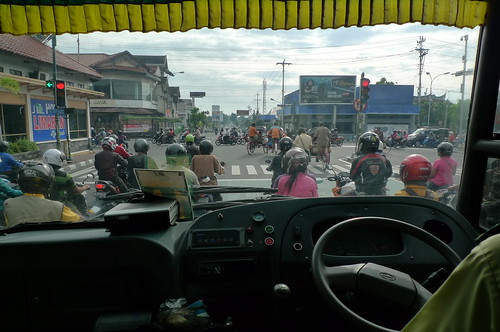
Candi Prambanan.
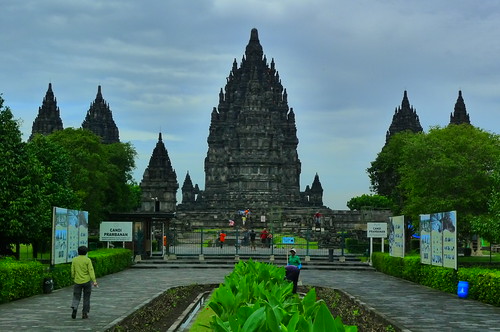
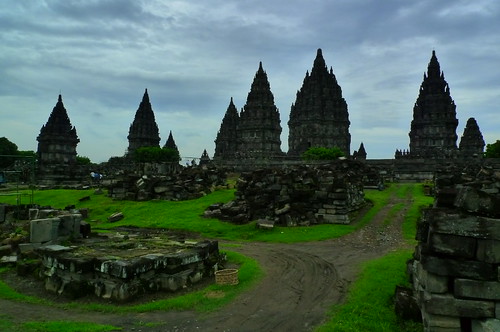
Candi Siwa (Shiva Temple). Check out the workers on the upper reaches - cleaning the temple exterior with small whisk brooms we later found out.
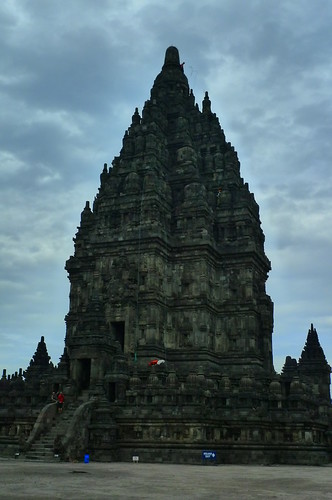
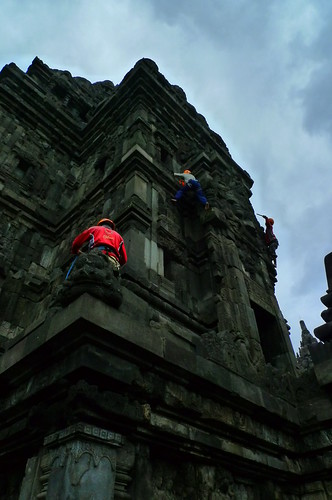
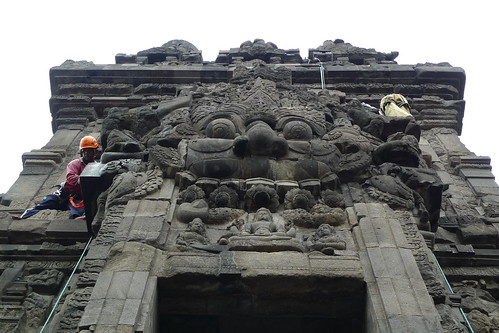
A very fine image of Ganesha in the Shiva Temple.
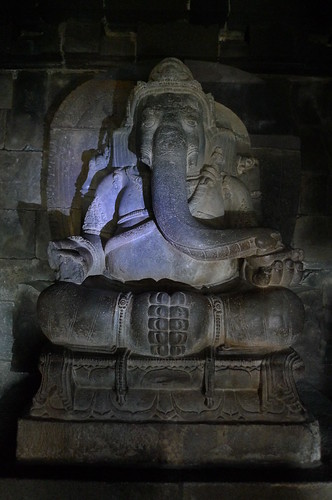
Of course Nandi Temple is across from Shiva Temple.
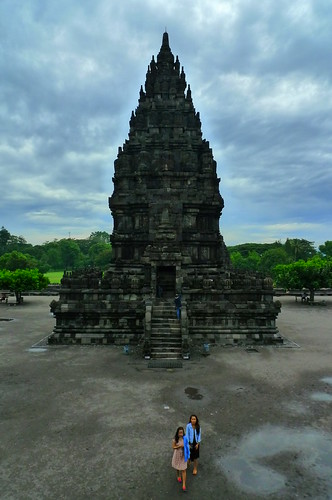
The bas-reliefs around the Shiva Temple tell the story of the Ramayana. The first panel below is the kidnapping of Sita, King Rama's wife - a main event in the story.
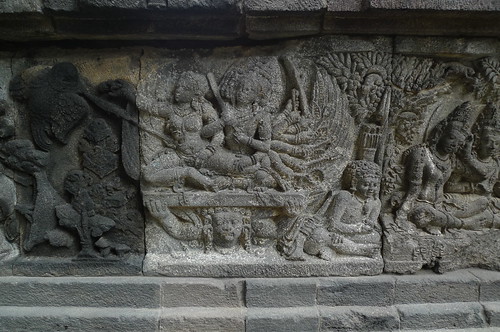
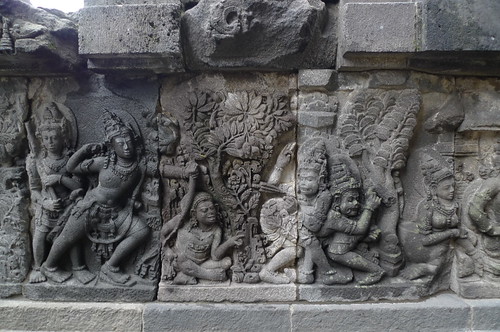
As in most of Indonesia, there is at least one volcano in sight.
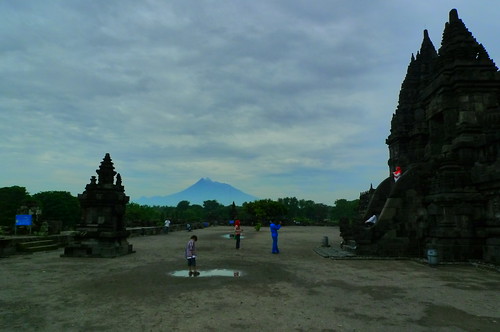
Candi Sewu, the earlier Buddhist Temple 1km to the north, shows more evidence of earthquakes and volcanic eruptions.

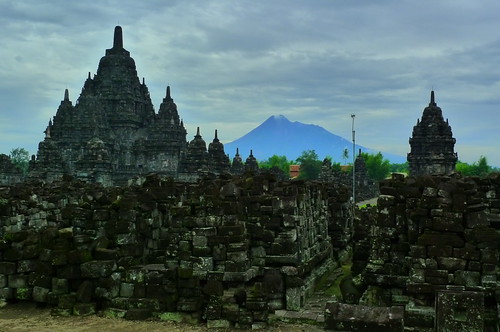


And finally the ride back to town with cadet Sun-ling observing the cockpit. ;-)

And then Borobudur at 6:15 AM the next day.
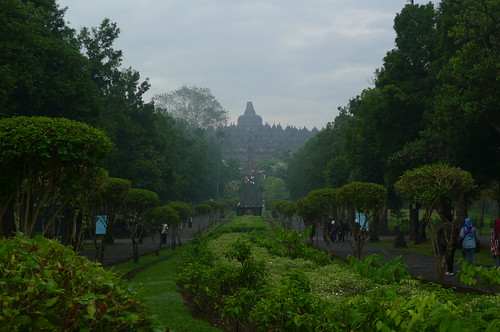
The four-sided square-ish base is about 350 feet per side.
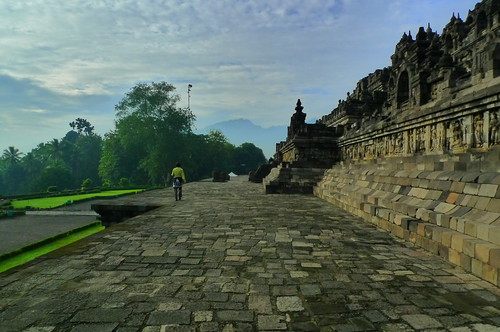
Hundreds of stupas and Buddha images on this temple.

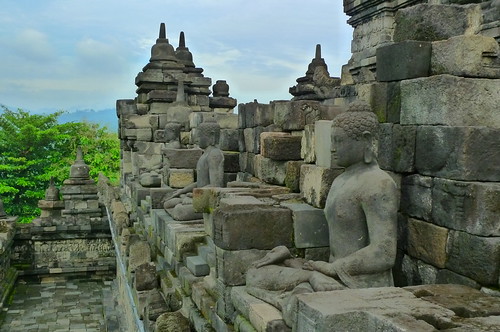
If not properly attired, you can borrow a sarong.
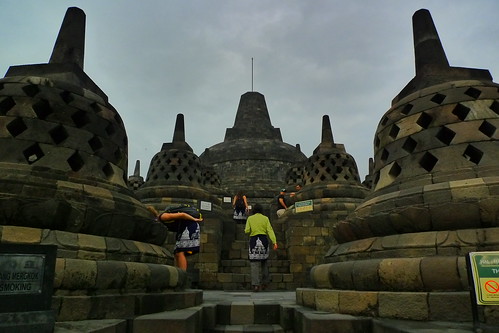
A visiting Buddhist monk gazes to the east.
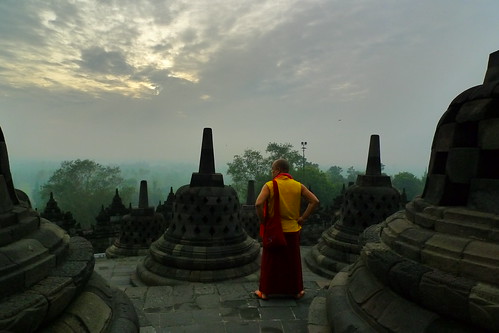
While this Buddha image gazes to the south.
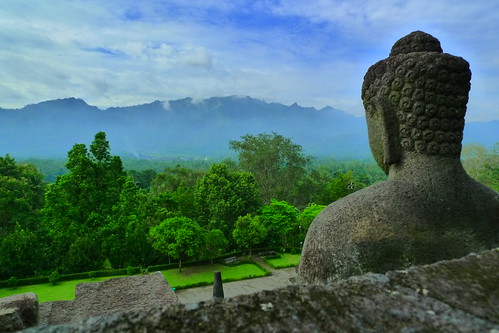
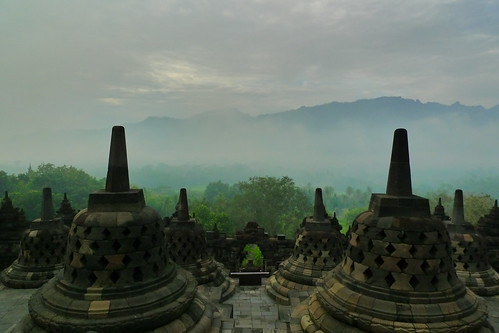
There is a Buddha image inside each of these bell-shaped stupas...
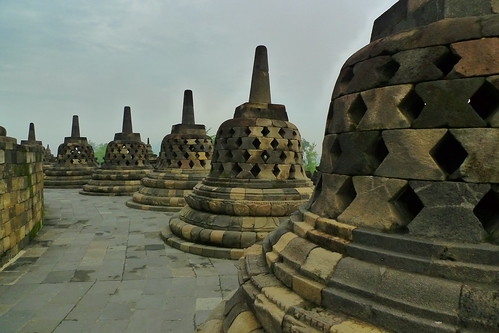
...Like the one in this partially damaged stupa.
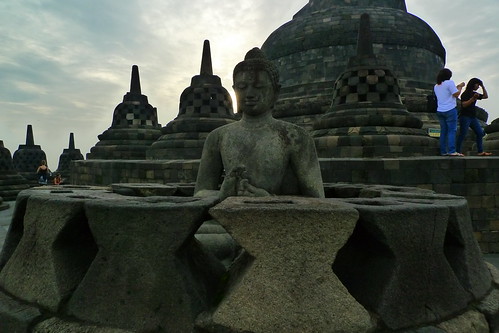
The bas-reliefs at Borobudur tell the story of the life of Prince Siddhartha, the Buddha.
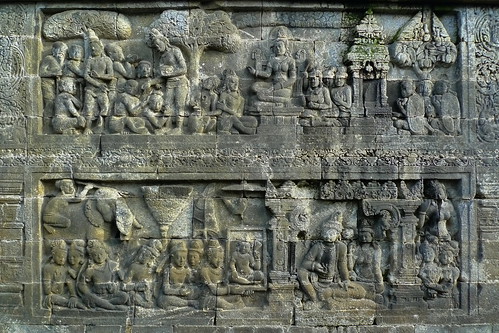

This arch at Borobudur is similar IMO to arches at Prambanan.

Borobudur is popular with school groups. Many students were eager to chat with Sun-Ling and I have a photo together.

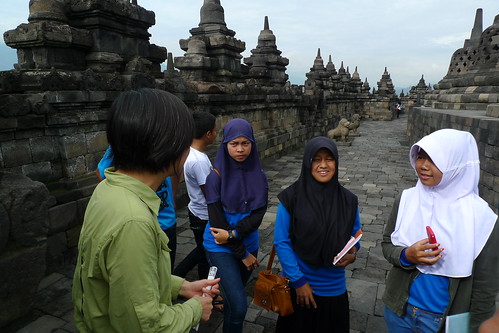
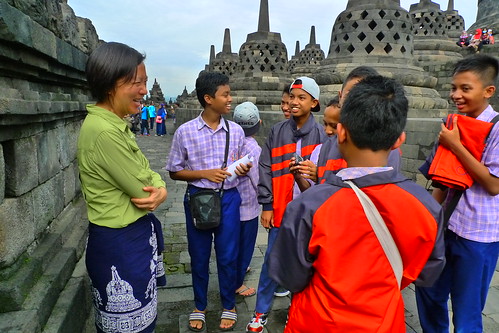


Ever present volcano.

Great photos. Loved Borobudur, but don't remember a dress code, maybe that's new.
ReplyDeleteKathy, There is a dress code; we saw the signage with 5 pictographs (sorry no photo). However, SL and I were clearly not even close to violating the dress code yet we were given sarongs, er sarongs were placed on us by the staff in the foreigner's entrance building. We guess they put sarongs on all foreigners. A bit pretentious given that it's a Buddhist Temple in a Muslim country. But no worries from us. Indonesians are very friendly, helpful, smiling, pleasant so we go with the flow. Visitors we are.
ReplyDeleteCloser to the temple itself, there was a station where groups of obviously dress code compliant Indonesians were putting on sarongs - so who knows what was going on.
Not to mention the young foreigner who was in a Spiderman hoody with face mask - no sarong though. ;-)
This is a fantastic article on Buddhist architecture . Thank you for sharing.
ReplyDelete